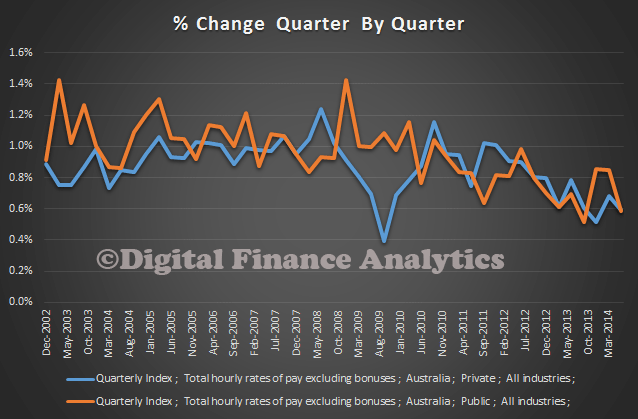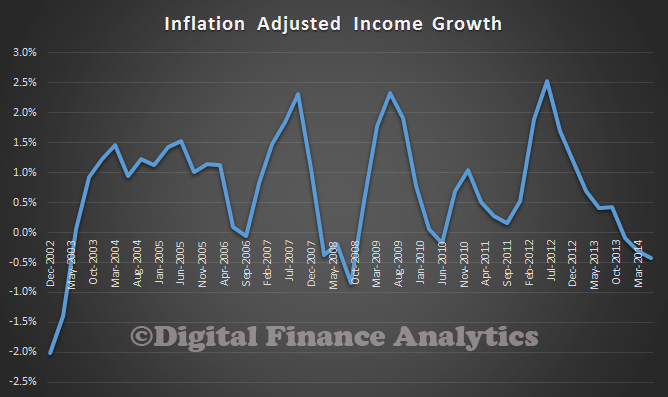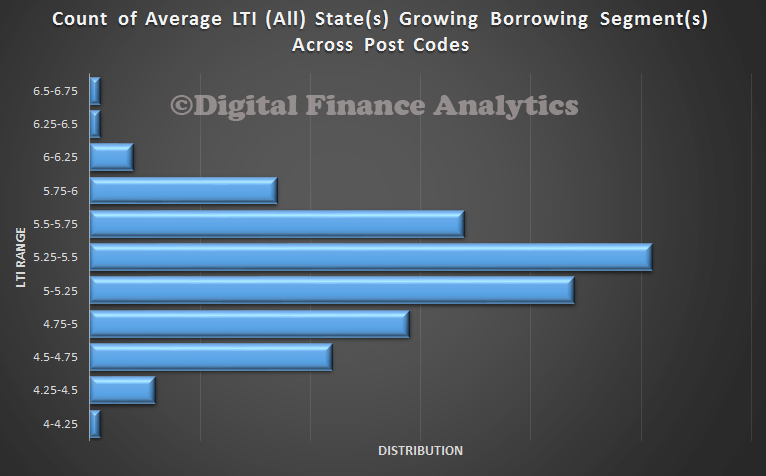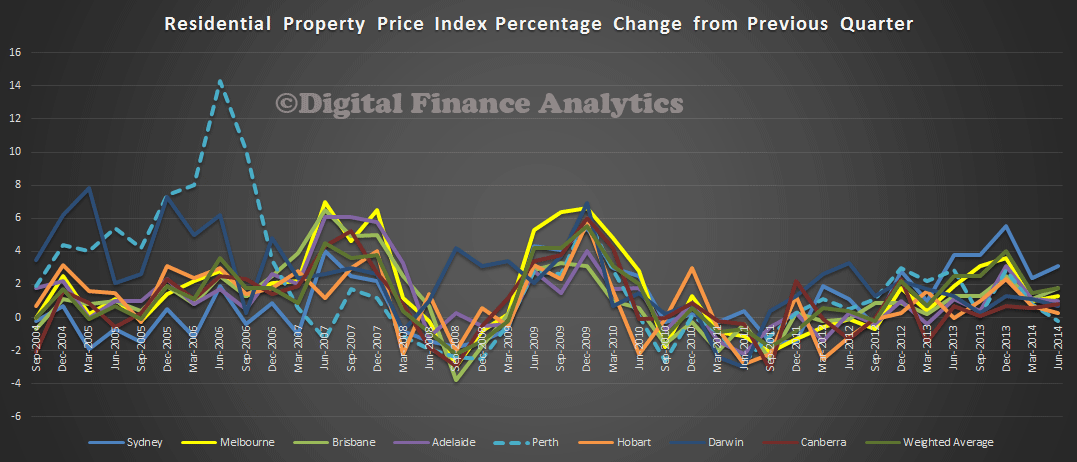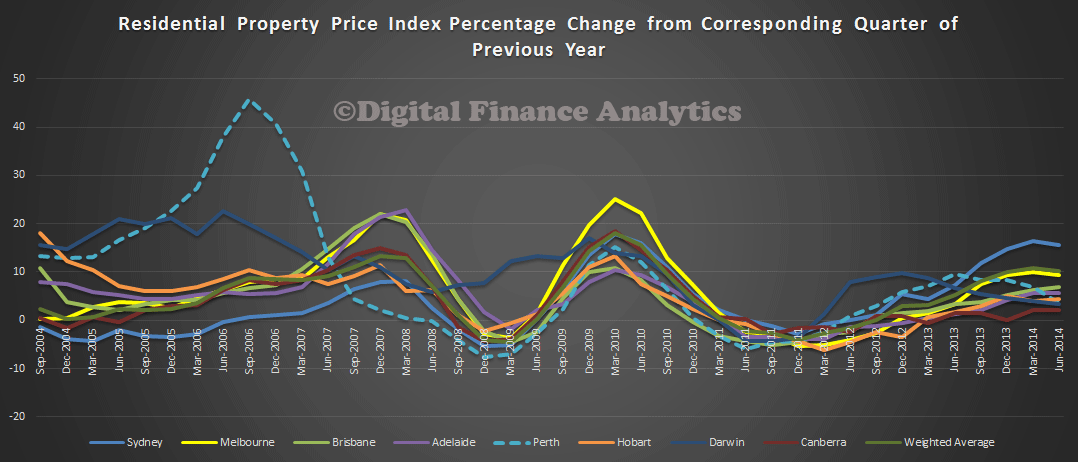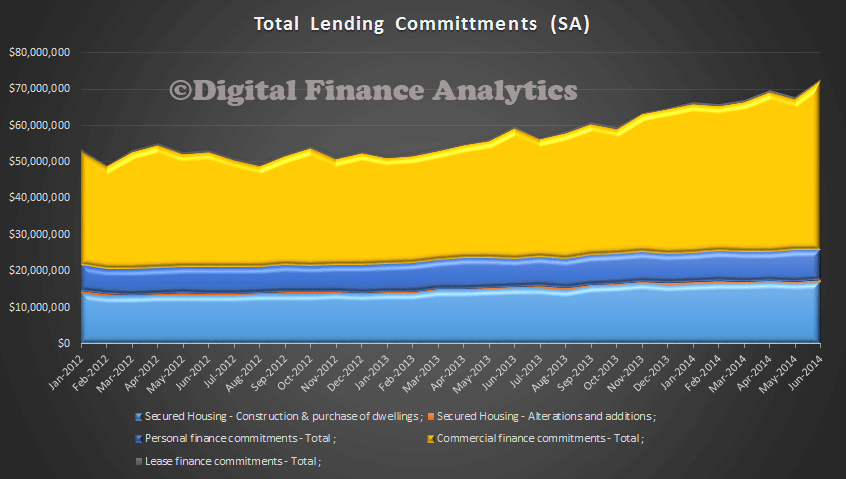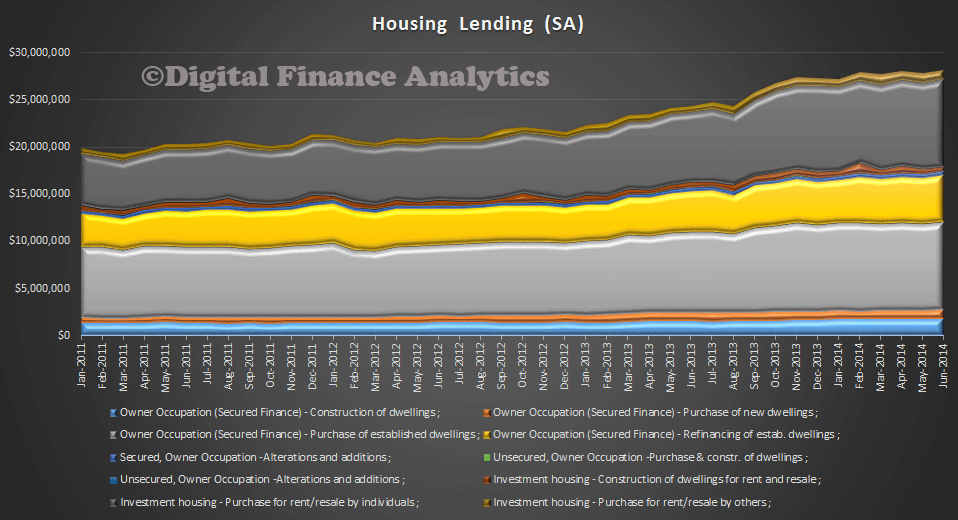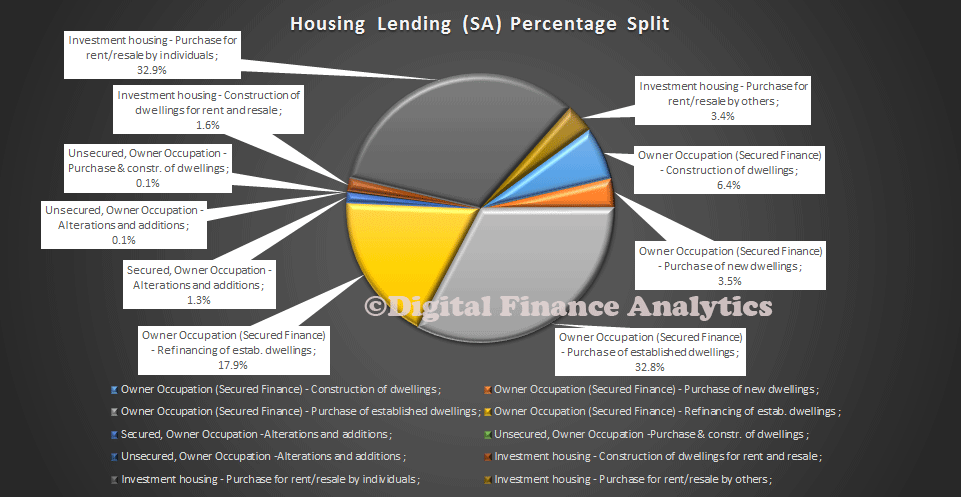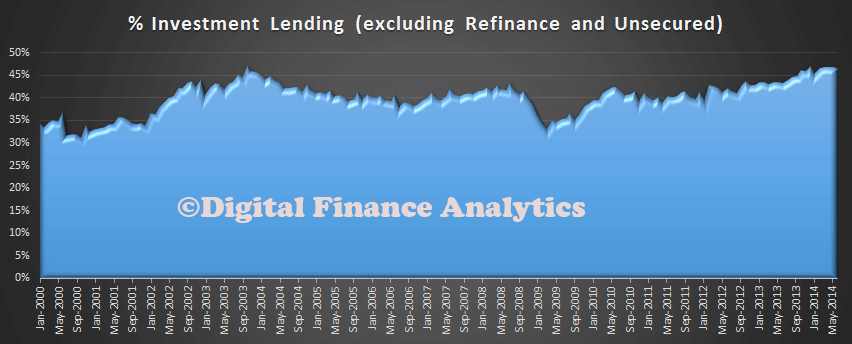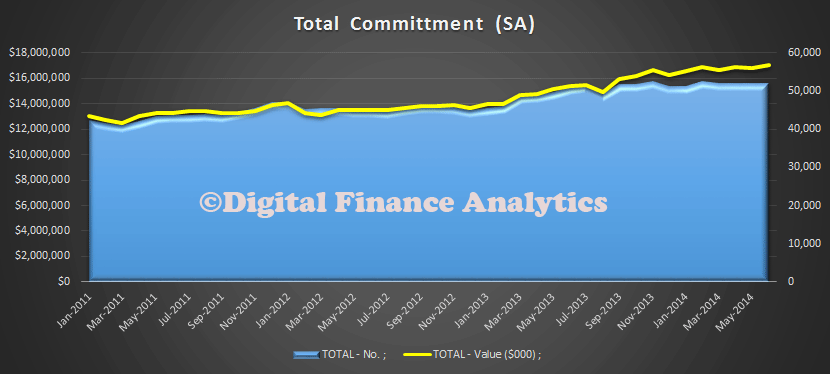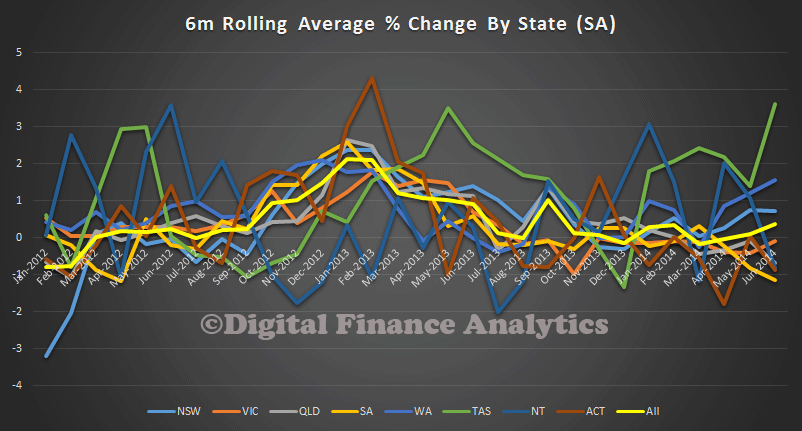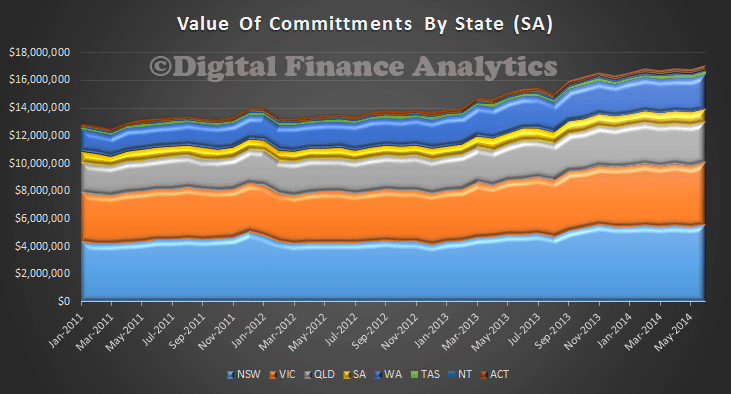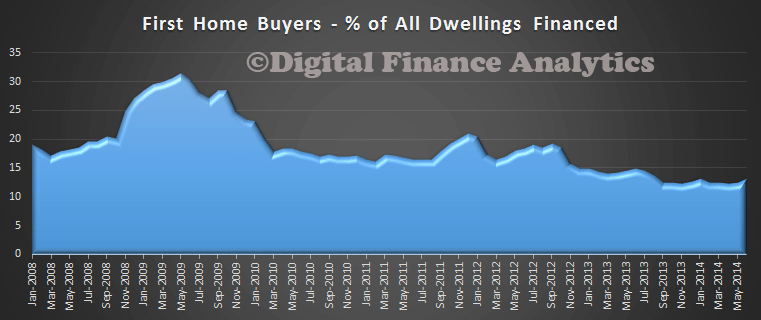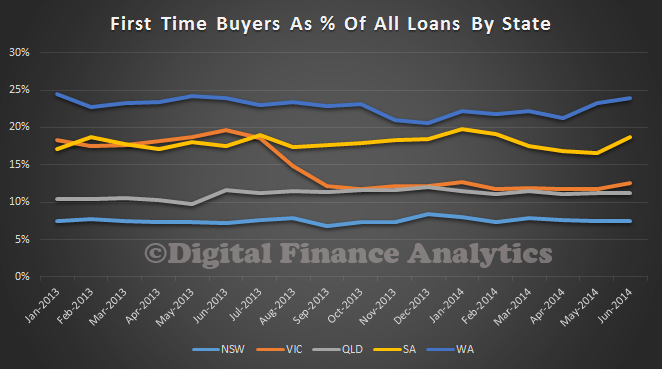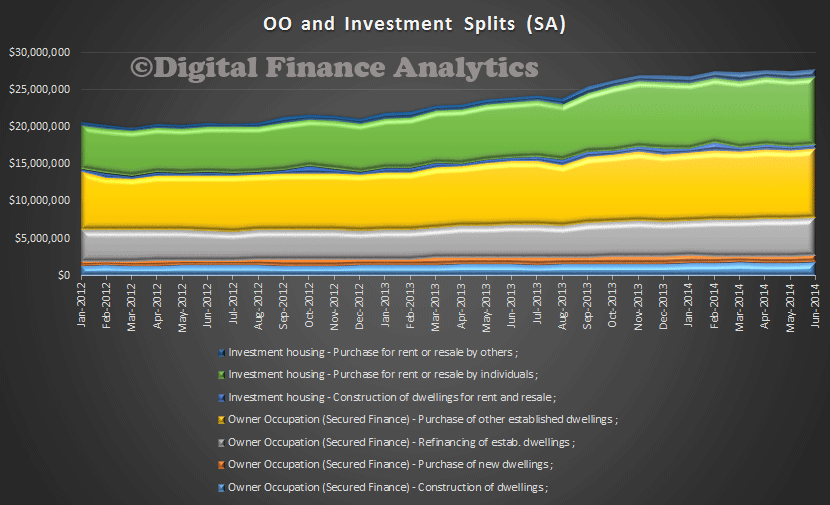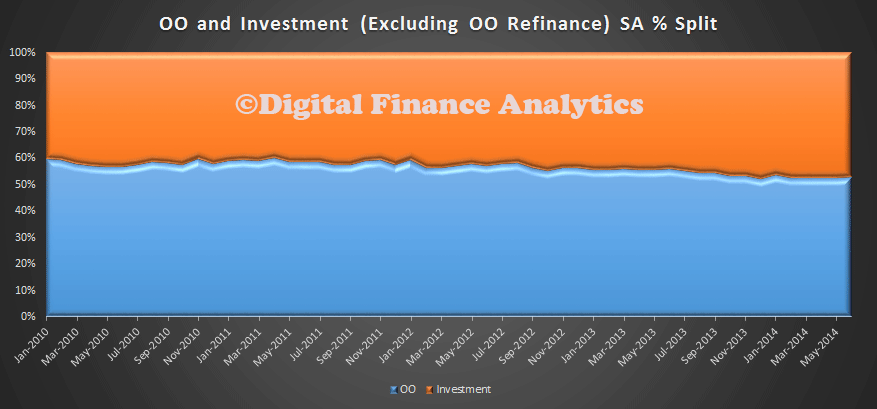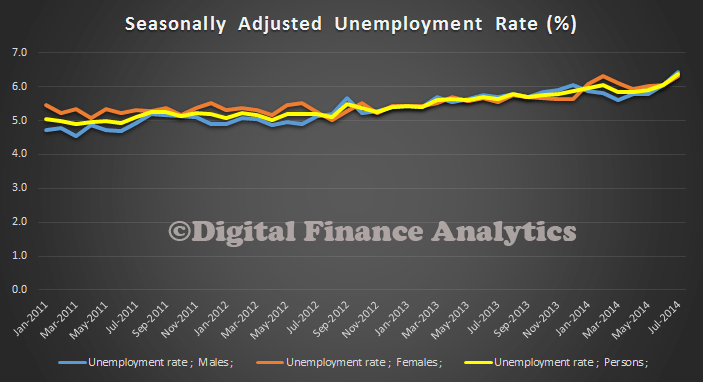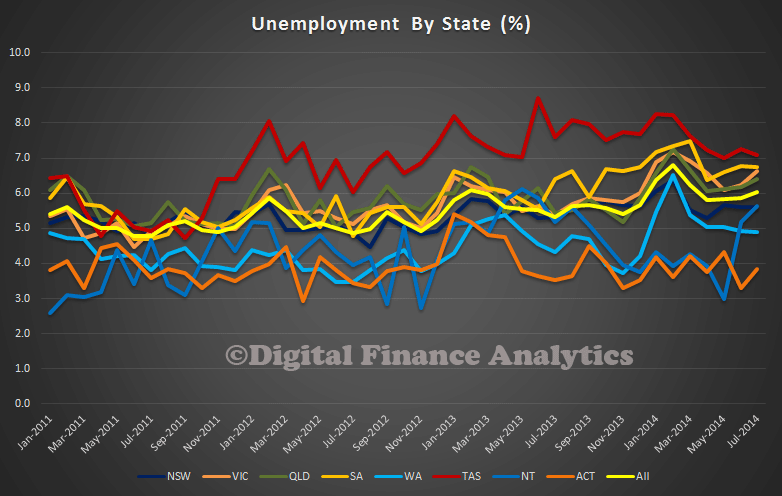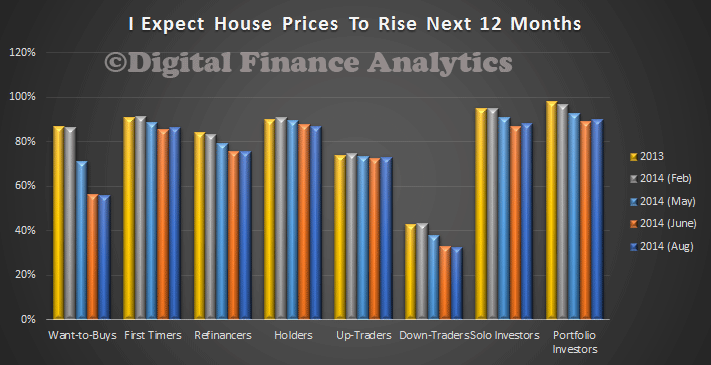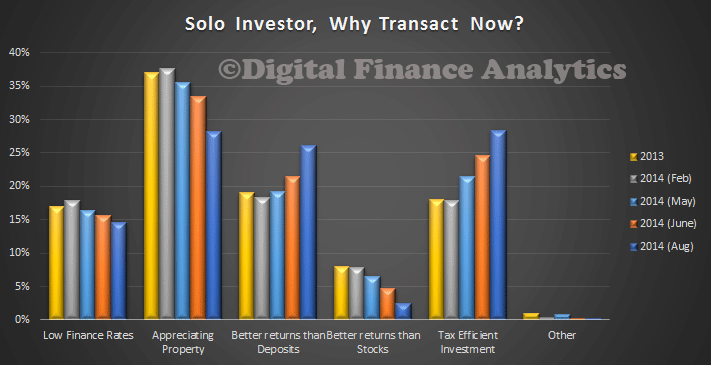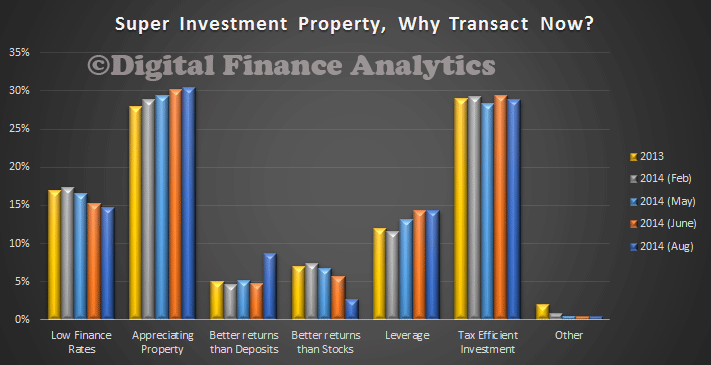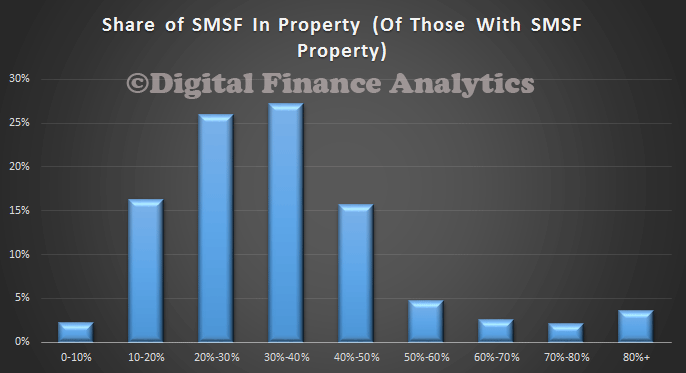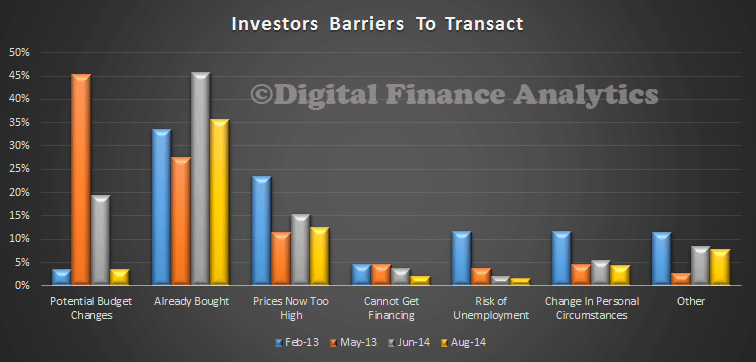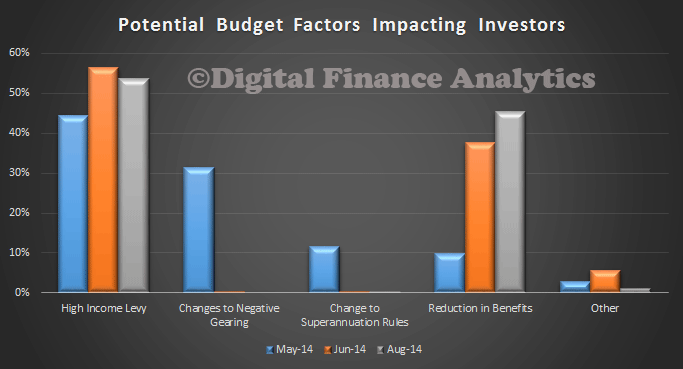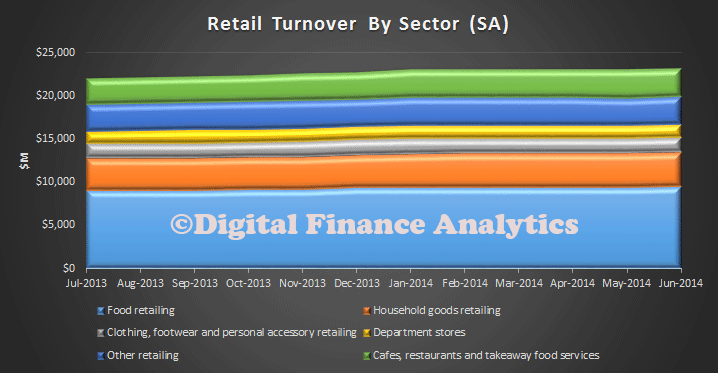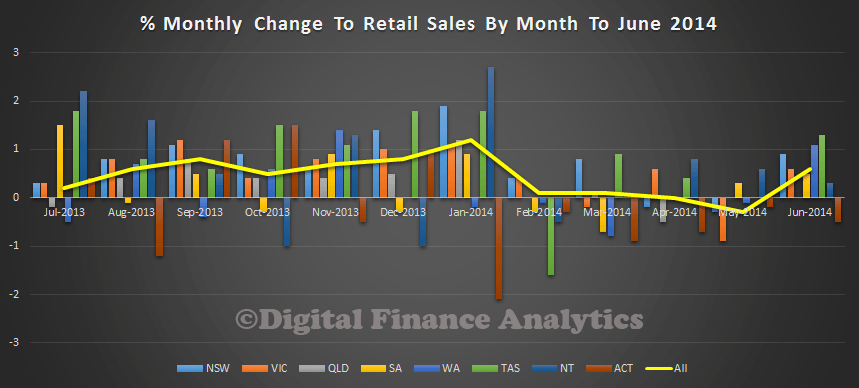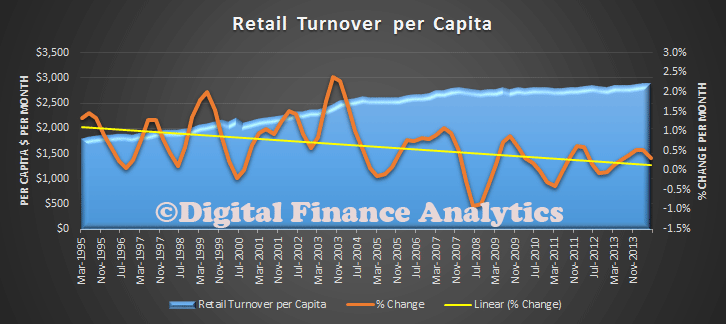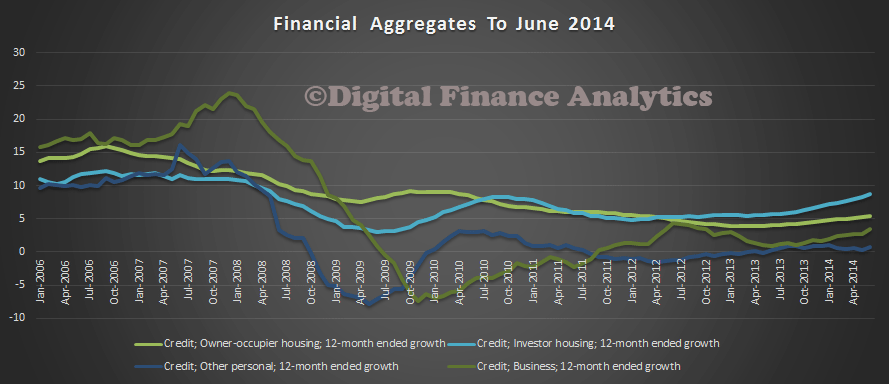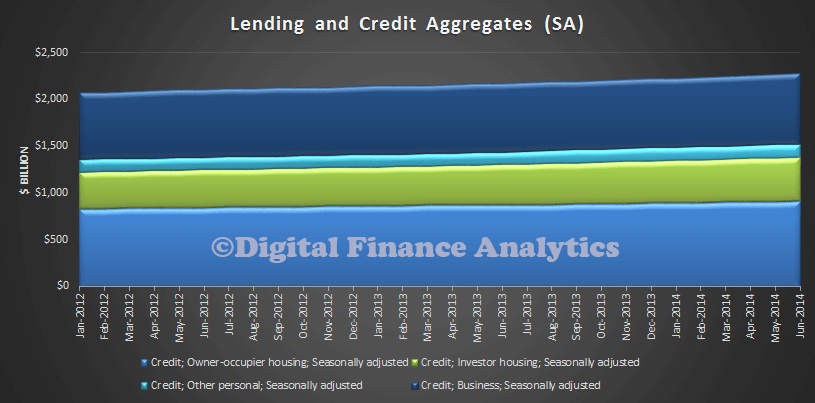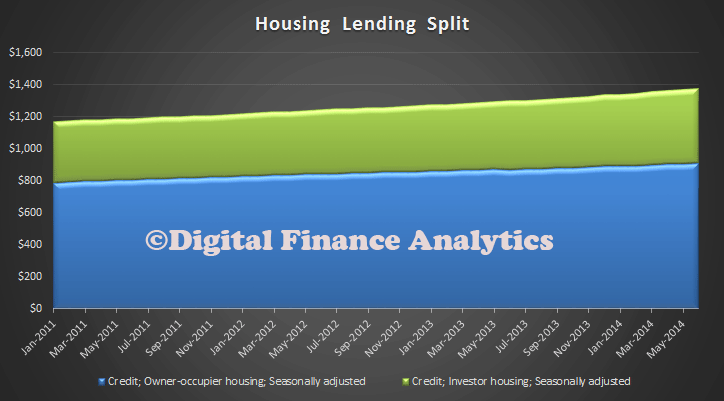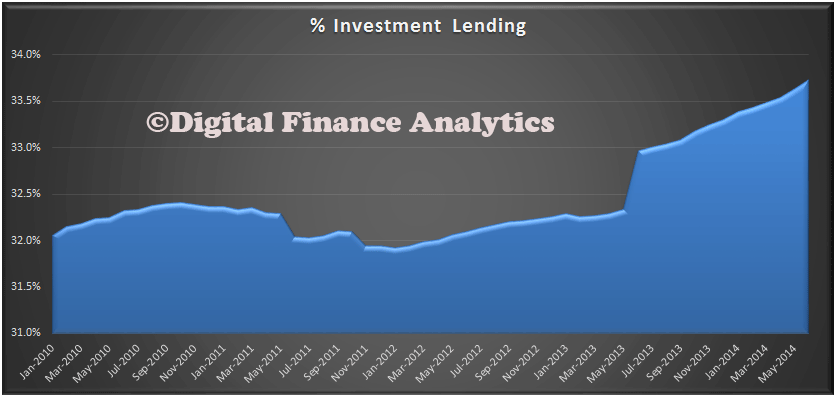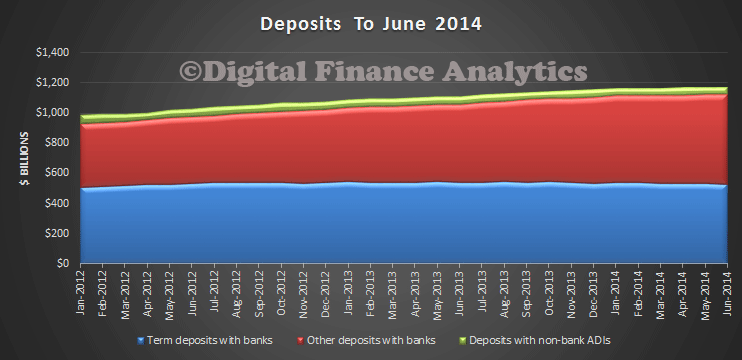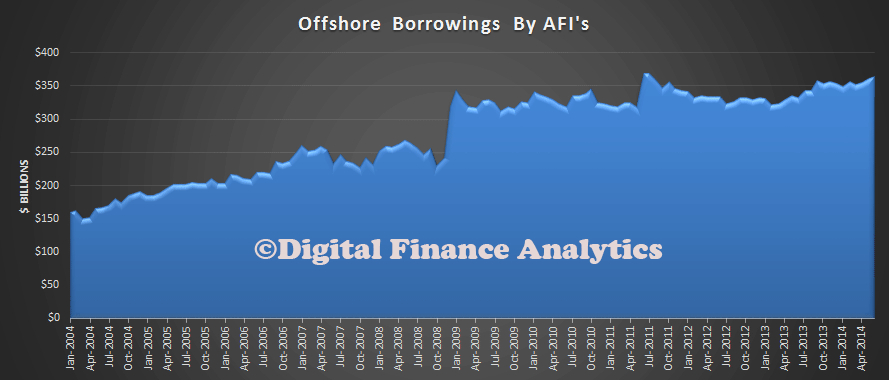As part of our household surveys we have been examining the state of play for NSW first time buyers since 2002. In our research we have identified the year in which they purchased, whether they subsequently refinanced, or moved on, and how many of these households are currently having difficulty in finding a lender to refinance with. To be clear, this is a snapshot, as at August 2014, across multiple cohorts.
The data shows, firstly the monthly volume of loans written for first time buyers, peaking in 2009, and now languishing at a 20 year low. Next we plot, by age of the purchase, what proportion of households have subsequently either refinanced an existing loan, or sold and bought elsewhere. Perhaps it is not surprising that loans which are older, are more likely to be churned. The yellow trend line shows the proportion of households, by year of origination who have tried, but have not so far been able to refinance their loan. We see a significant peak in loans written in the 2009 boom time (when first time buyer incentives were at their peak, both at a federal and state level in a response to the GFC). More recent loans are less likely to be churned, so we see the drop in recent month. This suggests that there are a number of households in the 2009 and 2010 cohort who are in some strife.
 We also analysed data on their current levels of mortgage stress, and their loan to income (LTI) ratios. We found that the average LTI grew steadily through the 2007-2012 cohorts, and currently stands at close to 6 times current gross income. We also see a peak in mortgage stress, in those households who took a loan in the 2009-2012 period. The proportion in mortgage stress are lower in the cohorts before and after this period. Once again the data highlights potential issues in specific cohorts, who are highly sensitive to unemployment, falling income or rising rates.
We also analysed data on their current levels of mortgage stress, and their loan to income (LTI) ratios. We found that the average LTI grew steadily through the 2007-2012 cohorts, and currently stands at close to 6 times current gross income. We also see a peak in mortgage stress, in those households who took a loan in the 2009-2012 period. The proportion in mortgage stress are lower in the cohorts before and after this period. Once again the data highlights potential issues in specific cohorts, who are highly sensitive to unemployment, falling income or rising rates.
 This data also is a warning, that first time buyer incentives can pull households into the market, and lay potential long term problems for them.
This data also is a warning, that first time buyer incentives can pull households into the market, and lay potential long term problems for them.

